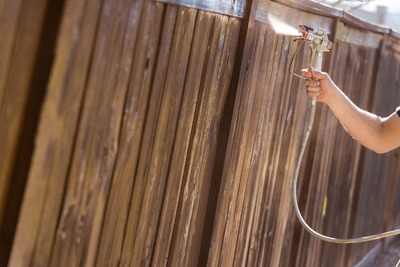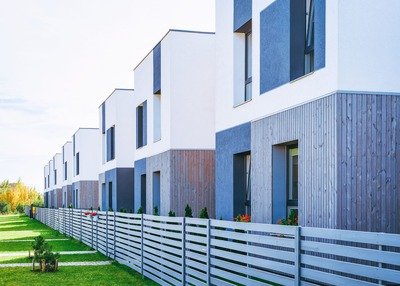If you’re in the market for a new fence at your home, you might be considering which materials are the best for your garden. Here at Hillsborough fencing, we have two different types of fencing Composite and Wooden both have their advantages and disadvantages.
Composite fencing is made from 95% recycled plastic with a mix of wood which makes it very durable. Whereas wooden decking is less durable it’s more natural and cheaper.
When choosing to fence it’s important to understand both types of fencing to see which is the best for your garden. To find out more about which fencing is best read on:
Composite Fencing
Positives
Special man-made materials like composite are a growing option in the fencing world. Unlike vinyl which is generally limited to smooth surfaces, composites can be formed into unique shapes and patterns. Composite fencing is made to look good using strong materials that are made to last around 25-30 years.
Composite fencing not only lasts longer but is much easier to maintain because of the materials it’s made out of. Composite fencing is the least likely to have mould and algae growth on it. The fencing doesn’t need to be painted or stained regularly which considerably resides in the maintenance cost of the fencing over the 30-year lifespan.
Its ability to handle a lot of pressure is the reason composite fencing is becoming more popular in homes. Composite decking is known for its sturdiness The mix between wood and recycled plastic makes it much stronger which is a major positive for composite decking.
Negatives
Composite fencing is all about your surroundings. The colour and type of fencing become very important to the usability of the fencing. Darker Composite is a very good absorber of heat meaning your fencing would become very hot on summer days. This would increase the likeliness of the fencing fading over time and would lose its colour.
Composite fencing is known for being aesthetically pleasing but this comes at a cost. Similar to composite decking when building a composite build needs a lot of infrastructures to hold it up. The fencing is very heavy so it needs a large amount of support to hold it up, especially in strong winds. This increases the cost of the fencing on top of the high cost of the panel itself.
Timber Fencing
Positives
One of the biggest advantages is timber's more natural look compared to composite. Wooden has a natural warmth that can’t be achieved by plastic options. Wooden fencing can also be stained in various colours and finished with many textures, unlike composite which is limited to 3 options.
Not only does timber fencing allow you to have it in a range of colours you can also have different styles and types of wood which will add a different aesthetic to your garden. Redwood and cedar labour costs tend to be much lower as they are much easier to install. This is due to the ease of work as it can be cut, shaped and sanded easily.
Timber fencing can be the most budget-friendly option. Wooden fencing has one of the lowest installation and materials buy costs of any type of fencing which makes it more popular than composite fencing. Although this comes with its problems.

Negatives
But with wooden Fencing, there is a clear reason why it is cheaper to buy compared to composite fencing. The Cheaper timber options have a much lower lifespan as they are more exposed to the elements which means they tend to only last for 10-15 years.
Timber Fencing has the highest maintenance costs of any fencing. As it requires painting and staining annually to stop erosion and mould growth. The Upkeep can be expensive and time-consuming as panels may need to be replaced because large amounts of mould or algae have grown on them which causes them to decay over time If not removed it could become worse.
The need for made-to-measure designs and labour all add to the cost of timber fencing. Although timber is considered a renewable material, it still involves cutting down trees. Which means it isn't very environmentally friendly compared to composite decking.
Overall: which is the best?
Alongside decking, fencing allows you to create a beautiful and inspiring outdoor space that is personal to you. The options for fencing are much wider than composite and timber but these are the most popular types. It’s important to consider the advantages and disadvantages of both which you think will fit your garden the best.














